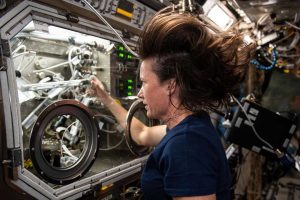Described as a quiet supersonic aircraft and a one-of-a-kind experimental airplane, NASA aims to use it to pave the way for commercial aircraft that can travel faster than the speed of sound.
The X-59 is expected to fly at 925 mph – 1.4 times the speed of sound – with its design and technologies allowing the aircraft to achieve these speeds more quietly.
The X-59 is the centerpiece of NASA’s Quesst mission, addressing the primary challenge to supersonic flights over land by making sonic booms quieter – to “a gentle thump”, according to Lockheed Martin
Configuration
The plane is 99.7 feet long and 29.5 feet wide, with its thin, tapered nose accounting for almost a third of its length. This will break up the shock waves that would ordinarily result in a supersonic aircraft causing a sonic boom, said Nasa.
“Due to this configuration, the cockpit is located almost halfway down the length of the aircraft – and does not have a forward-facing window. Instead, the Quesst team developed the eXternal Vision System, a series of high-resolution cameras feeding a 4K monitor in the cockpit.”
Quesst
“This is a major accomplishment made possible only through the hard work and ingenuity from NASA and the entire X-59 team,” said NASA Deputy Administrator Pam Melroy.
“In just a few short years we’ve gone from an ambitious concept to reality. NASA’s X-59 will help change the way we travel, bringing us closer together in much less time.”
Next, says Lockheed, the aircraft will complete ground tests including engine-run and taxi tests. Its next major milestone, its first flight, is due to take place later this year.
After the aircraft is validated in initial flight tests, it will move into the acoustic testing phase that will include flights over populated areas. This will provide U.S. and international regulators with statistically valid data required to review rules regarding supersonic flight over land.
Potentially, this would halve commercial flight times, says the company. For 50 years, such flights have been prohibited because of the disturbance caused by the loud, startling sonic booms.
Image: Lockheed Martin Skunk Works
See also: NASA drones fly for Air Taxi research
 Electronics Weekly Electronics Design & Components Tech News
Electronics Weekly Electronics Design & Components Tech News




